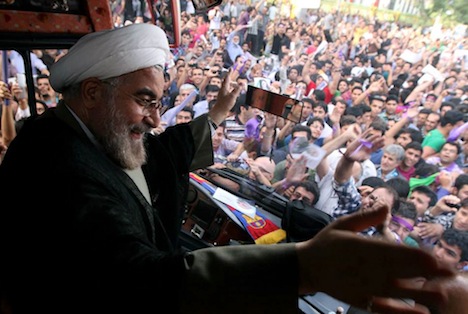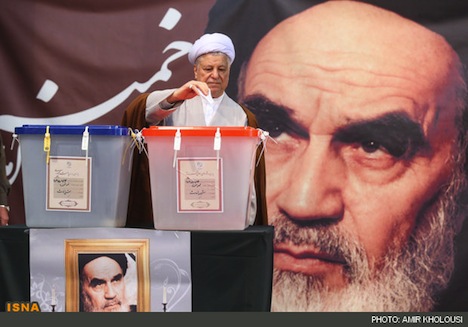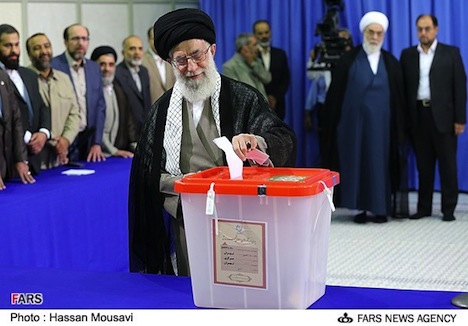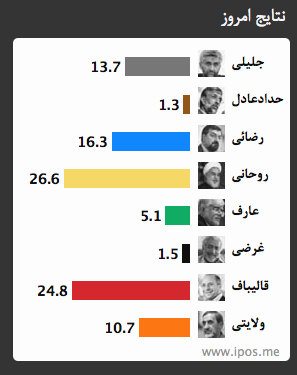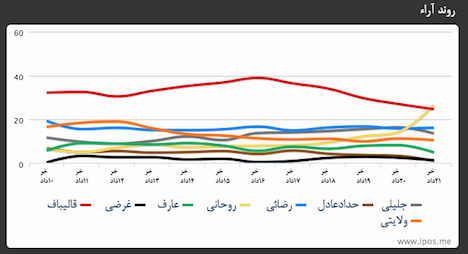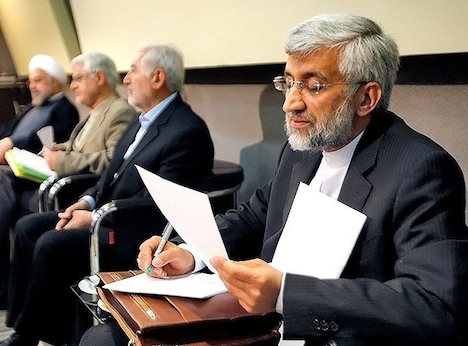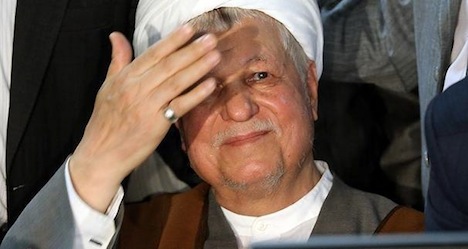
In less than 24 hours, Iranians will know who will be clear to run in next month’s presidential election, the first since the June 2009 race that led to the ‘Green Movement’ that attracted global attention.
That’s because within Iranian democracy, the Guardian Council, a 12-member body of clerics and attorneys that advises the Supreme Leader on constitutional matters, also functions as a gatekeeper for presidential and parliamentary candidates in Iran. In theory, the Guardian Council approves only those candidates who meet the criteria to run for the presidency. In reality, it means that minor, independent, secular, liberal, and/or female candidates, or anyone who appears too radical a threat to the current system or simply deemed unacceptable by the Supreme Leader, can be excluded from the race. It also means that the Guardian Council can shape the contours of the race by determining the number of relative conservatives and reformists.
As such, although 686 presidential candidates — including 30 women — have registered to run in the June 14 presidential race, just a handful are expected to be confirmed to run. In the 2009 election, for example, the Guardian Council approved just four candidates out of 476 initial hopefuls; in the 2005 election, the Guardian Council approved just six candidates from among 1,014.
But the question on everyone’s mind is whether the Guardian Council will approve Hashemi Rafsanjani (pictured above), widely seen as the most powerful politician in Iran after the Supreme Leader, Ali Khamenei. Rafsanjani, who served previously as Iran’s president from 1989 to 1997, is as the current chairman of the Expediency Discernment Council, a 34-member body that mediates between the elected Iranian parliament and the Guardian Council. He placed first in the first round of the 2005 presidential election, but ultimately lost widely in the runoff to the more conservative and populist Tehran mayor, Mahmoud Ahmadinejad. As Khamenei’s contemporary, Rafsanjani was a political rival in the 1980s when Khamenei was Iran’s president (before his 1989 elevation as Supreme Leader), and that makes him a potential president with the profile and support base to potentially challenge Khamenei as Supreme Leader. On the other hand, Rafsanjani is someone Khamenei knows well, even if they’re not best friends, is somewhat of a consensus-builder, and would be unlikely to unleash the kind of erratic leadership that Ahmadinejad has embraced.
In light of the controversial aftermath of the 2009 election, during which ‘Green movement’ supporters of Mir-Hossein Mousavi took to the streets in opposition to the legitimacy of Ahmadinejad’s reelection, the regime’s crackdown left many reformists, journalists and others killed or in jail (Mousavi and others remain under house arrest even today). As a result, many of the movement’s backers have settled upon Rafsanjani as their preferred candidate. That includes former president Mohammad Khatami, who served as president from 1997 to 2005 as a strong advocate for liberalization in both domestic and foreign affairs, though he wasn’t necessarily effective at enacting reform.
Rafsanjani himself didn’t openly support the ‘Green movement’ in the wake of the 2009 election, but he made some remarks indicating, ever so gently, his preference for the right to open speech, free assembly, and greater press freedom, and his opposition to the harshness of the crackdown. Though he’s certainly not as reformist as Mousavi and Khatami, he’s never been a full-throated conservative either, which makes him in many ways a great compromise choice in light of the post-2009 battles. At age 78, he was Iran’s president at the end of the war with Iraq in the 1980s, so he’s far from the kind of fresh face who would push for rapid change. But for all the reasons above, he’d start the race with the support of Iran’s reform movement and he has the personal platform to push through reforms that Khatami could not a decade ago.
But Rafsanjani’s disqualification, given his status as a former president, would be unprecedented in Iranian politics, and could well lead to the kind of widespread protests that followed the 2009 election. His opponents in the Guardian Council may well be looking to Rafsanjani’s advanced age as an excuse to disqualify him, according to Iranian new reports today:
Iran’s Guardian Council Spokesman Abbas Ali Kadkhodaei says the body may consider the physical condition of presidential hopefuls in its approval process. If an individual, who is supposed to carry out a macro executive task, can work for only a few hours a day, he cannot be approved, Kadkhodaei said in an interview with Iran’s Arabic-language al-Alam news network. The Guardian Council may take physical condition into consideration in its vetting of presidential hopefuls but no discussion has been held yet regarding the issue, he added.
Given that Khamenei is just five years younger than Rafsanjani, I’m not sure that’s such an incredibly useful precedent, and I’m not sure that it will ultimately be the reason for his disqualification, if it happens.
So what happens if Rafsanjani isn’t permitted to run?
Continue reading Iran awaits Guardian Council decision on Rafsanjani, other presidential contenders →
![]()
